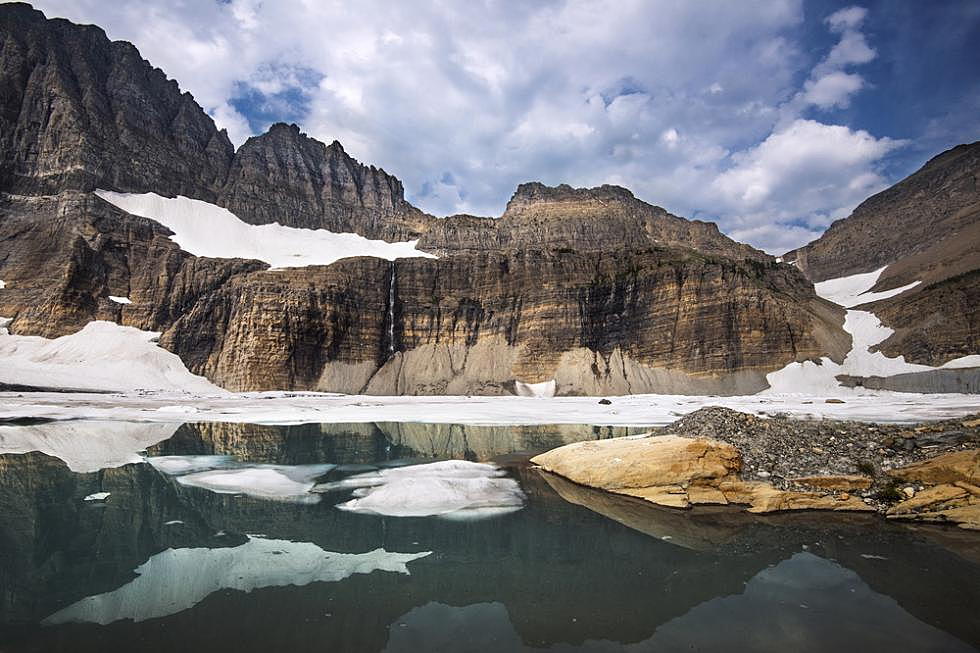
Glacier National Park braces for influx of visitors with new strategies
With tourism increasing every year at Glacier National Park, visitors should not only expect more congestion but also new services, its superintendent said.
Superintendent Jeff Mow told City Club Missoula this week that visitation to Glacier National Park has increased 40 percent in the last three years.
“Last year was such an amazing year at Glacier,” he said. “In the month of July 2017, our visitation at Glacier National Park actually exceeded that of Yellowstone. That’s pretty remarkable. I can tell you, nobody really envisioned that Glacier would ever exceed Yellowstone in terms of visitation.”
Mow said Glacier Park is not designed to handle the million visitors it sees each month during the peak summer visitation period.
The result? Rangers must close some venues to tourists after they become so crowded emergency vehicles cannot get through and safety is compromised, Mow said.
Places like Bowman Lake and Many Glacier Valley are some of the venues hit hardest by visitation, and had to be closed multiple times last summer. In the Many Glacier Valley, management had to close access 16 times, but Mow said visitors were accepting of the restrictions.
“Even with a million visitors in a month, our visitor satisfaction results are just as high as they’ve ever been,” he said.
Already implemented to help with increased traffic are timed parking spots and preventative search and rescue, or rangers who are placed on trails to remind hikers to stay hydrated and educate them on what to expect for the rest of their hike.
Last summer, hikers were evacuated between Granite Park Chalet and the bottom of the Loop Trail 15 days in a row.
This summer, Glacier will implement new services to help visitors navigate through the increasing congestion, Mow said.
The National Park Service will add more timed parking areas, continue to restrict venues when needed, and provide real-time information for tourists via social media and maps that easily show high traffic areas.
Using webcams, providing carpool and shuttle services, and improving education for newcomers about the area are also in the works.
Partnerships with other areas of the state, including Montana’s seven Indian reservations, and organizations like Montana State Parks can help to spread the word about other public lands and nearby attractions.
What’s driving the booming visitation numbers? In part, it’s the growing popularity of outdoor recreation.
“Outdoor recreation today is growing at twice the rate of other sectors of the economy, representing 2 percent of the GDP in the United States,” Mow said. “There’s just a huge demand. It’s not just destination visitors, it’s also about second home visitors, it’s also about retirees and where they tend to go.”
The increase in the Glacier Park’s visitation is not only due to recreation, but also due to the promotion and marketing of the park in other states.
Glacier Country Tourism is a nonprofit that helps market Glacier National Park as a travel destination to other parts of the United States and partners with agencies to advertise in other countries.
The organization also helps other destination marketing organizations promote other tourist attractions like Yellowstone National Park and Flathead Lake state parks.
Racene Friede, the executive director of Glacier Country Tourism, said money brought into the state by tourism is vital to Montana’s economy.
In 2017, 12.5 million non-resident visitors traveled to Montana, accounting for about $3.34 billion in direct expenditures.
“The tourism industry works to promote the qualities that make Montana a great place to work, to play and to live,” she said. “Those travelers add to the lifestyle that we as Montanans enjoy by allowing for better air service, restaurants, more shopping and more events.”
Seventy-two percent of tourists who visit Montana are return visitors, Friede said. And of all the parks in Montana, 72 percent of visitors travel to Glacier National Park.
Even with increasing traffic in the park, marketing remains vital. Without it, state economies would be severely affected, Friede said.
“While we know that we need to remain competitive, we also understand that increased visitation, especially in Glacier National Park, is a double-edged sword,” she said.
Now the organization is trying to soften the impact of promotion efforts. Three years ago, it stopped actively marketing the park in July and August, which are the peak months for visitation.
Now the group focuses its Glacier Park promotions on the spring and fall and instead spread the word about other attractions like Lake Como and the National Bison Range during the summer.
Friede emphasized that Glacier Park is open year-round, with plenty of winter activities for visitors to enjoy when roads are open.
